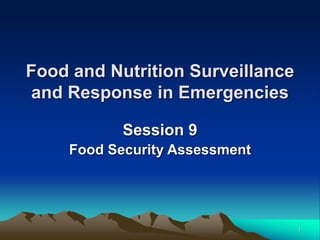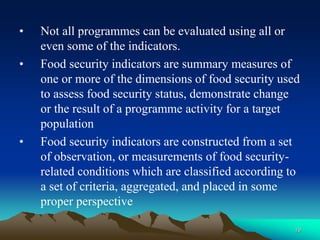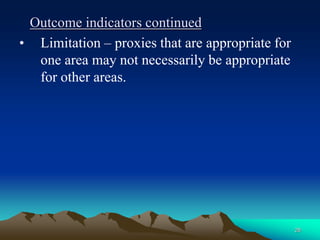This document discusses food security assessment in emergencies. It defines food security and its three dimensions: availability, access, and utilization. Food security is determined by interactions between agro-physical, socioeconomic, and biological factors. Assessments measure these dimensions and perceptions of insufficiency, uncertainty, etc. A range of indicators are used to reflect the multiple dimensions, including production, income, expenditures, consumption, and nutrition status. Process indicators reflect food supply and access, while outcome indicators provide information on the likelihood of events affecting household security. A variety of methods are discussed, from early warning systems to specific assessment approaches used by organizations.



























